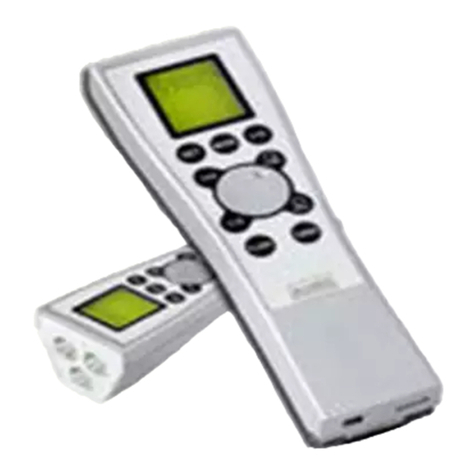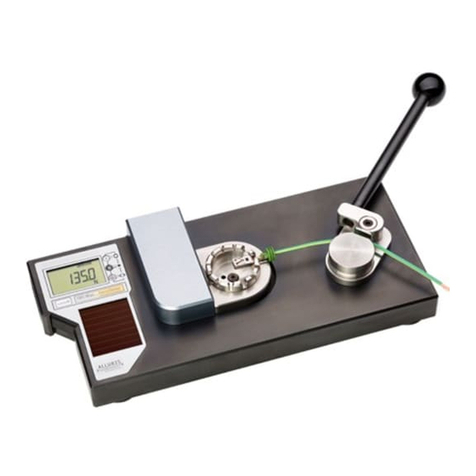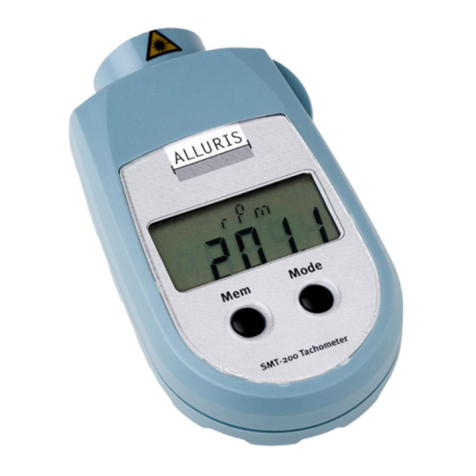
FMI-B
FMI-S
Bedienungsanleitung
Operation manual
Notice d’utilisation
Instrucciones de servcio
Istruzioni per l’uso
www.alluris.de
Page 2 of 34
Content
1.0 Safety precautions 3
2.0 Before starting operation 4
2.1. Scope of supply 4
2.2. Applying force by hand 5
2.3. Energy Harvesting (FMI-S) 5
2.4. Charging the battery (FMI-B) 5
2.5. Overview 6
2.6. General remarks 7
3.0 Starting Operation 8
3.1. Preparing the Measurement 8
3.2. Turning the instrument ON/OFF 8
3.2.1. Autoreverse display 9
3.2.2. Selecting measuring units 9
3.3. Selecting the operation mode 10
3.3.1. Standard mode 10
3.3.2. Peak value detection with Peak modes 10
3.4. Start/Stop Measurements 12
3.5. Taring 13
3.6. Displaying measured values 13
3.6.1. Resetting the drag indicator 14
3.7. Clearing the memory 14
3.7.1. Deleting single values 14
3.7.2. Clearing memory completely 14
4.0 Setting measurement parameters 15
4.1. Selecting the parameter menue 15
4.2. General settings (P1) 16
4.2.1. Selecting dimensional units (P11) 16
4.2.2. Changing +/- prefix for push or pull operations (P12) 17
4.2.3. Display-refresh rate (P13) 17
4.2.4. Automatic measuring stop – Auto-Stop for FMI-S (P14) 17
4.2.5. Automatic measuring stop
– Auto-Stop for FMI-B
(P14) 18
4.2.6. Auto-Off function (instrument off) (P15) 18
4.2.7. Automatic taring function – Auto-Tara (P16) 18
4.3. Resetting factory defaults (PO) 19
4.4. Memory and statistic functions (P2) 19
4.4.1. General considerations on memory functions 19
4.4.2. Setting memory and statistics functions 20
4.4.3. Saving single values (Single) 20
4.4.4. Saving measuring cycles (Series) 21
4.4.5. Displaying statistics 22
4.4.6. Recalling memory 23
4.4.7. Clearing memory 23
4.5. Monitoring limit values (P3 und P4) 24
4.5.1. Working with limit values 24
4.5.2. Setting limit values 24
4.5.3. Deleting limit values 25
5.0 Interfaces (series FMI-B30 und FMI-S30 and higher) 25
5.1. Data transfer via USB 25
5.1.1. Software FMI_Connect 25
5.1.2. Software FMI_Analyze 26
5.1.3. Software FMI_Analyze Pro+ 26
5.1.4. Software COM-Bridge 26
5.1.5. Laser distance sensor 27
5.2. Hirose-Socket 27
5.2.1. Foot switch for data tansfer 27
5.2.2. Drive control 27
5.2.3. Data cable for digitale I/O’s 28
6.0 Test stand application of force gauges 29
7.0 Technical Data 30
8.0 Service 31
8.1. Extended 5-Year Guarantee 31
8.2. Product registration 31
8.3. Calibration certificates 31
9.0 Frequent questions (FAQ) 32
A. Appendix 33
A.1 Notes 33
A.2 Calibration confirmation acc. DIN EN 10204 2.1 33
A.3 Declaration of Conformity 34































